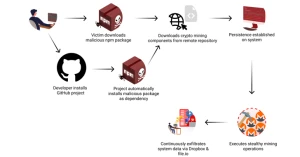الدورات
title
Best Tools and Websites for Cybersecurity

In today's digital age, cybersecurity is more important than ever. As cyber threats evolve, so do the tools designed to protect us. Whether you're a business owner, IT professional, or someone interested in improving your online security, it's crucial to stay updated with the best tools and websites in the field. Below are some of the most effective cybersecurity tools and resources that can help you protect your data and stay safe online.
1. Kali Linux
Type: Operating System
Best For: Penetration testing and ethical hacking
Website: https://www.kali.org/
Description: Kali Linux is one of the most popular operating systems used for penetration testing and cybersecurity research. It comes preloaded with numerous tools that can be used for testing network security, conducting vulnerability assessments, and performing ethical hacking. It's an open-source, community-driven project used by cybersecurity professionals worldwide.
2. Wireshark
Type: Network Protocol Analyzer
Best For: Network security analysis
Website: https://www.wireshark.org/
Description: Wireshark is a network protocol analyzer that allows you to capture and examine the data traveling through your network. It's widely used for monitoring network activity and diagnosing security problems. Wireshark supports deep inspection of hundreds of protocols and can be a valuable tool for discovering network vulnerabilities.
3. Metasploit
Type: Penetration Testing Framework
Best For: Exploiting vulnerabilities
Website: https://www.metasploit.com/
Description: Metasploit is an open-source framework used for penetration testing and vulnerability research. It allows security professionals to write, test, and execute exploit code against a remote target machine. It is a powerful tool for discovering and exploiting vulnerabilities in systems, networks, and applications.
4. Nmap
Type: Network Mapper
Best For: Network scanning and vulnerability detection
Website: https://nmap.org/
Description: Nmap is an open-source tool used for network discovery and security auditing. It helps map out network devices, services, and vulnerabilities. Nmap is commonly used to identify open ports, running services, and potential security issues within a network.
5. Burp Suite
Type: Web Application Security Testing
Best For: Web vulnerability scanning
Website: https://portswigger.net/burp
Description: Burp Suite is a popular tool used for web vulnerability scanning and security testing. It can detect various vulnerabilities in web applications, including SQL injection, cross-site scripting (XSS), and cross-site request forgery (CSRF). It's a comprehensive tool for web security testing and is frequently used by security professionals to assess web application vulnerabilities.
6. OWASP ZAP (Zed Attack Proxy)
Type: Web Application Security Testing
Best For: Detecting vulnerabilities in web apps
Website: https://www.zaproxy.org/
Description: OWASP ZAP is a free, open-source security tool designed for finding vulnerabilities in web applications. It’s ideal for penetration testers, security professionals, and developers who need to test and secure their web apps. ZAP supports automated and manual testing of web applications, including scanning for XSS, SQL injection, and other vulnerabilities.
7. VirusTotal
Type: File and URL Scanning Service
Best For: Analyzing suspicious files and URLs
Website: https://www.virustotal.com/
Description: VirusTotal is an online service that allows you to upload files and URLs to scan for malware and viruses. It uses multiple antivirus engines to detect threats and provides detailed reports on suspicious files. VirusTotal is widely used by cybersecurity professionals to analyze and identify potentially harmful content.
8. Cybersecurity & Infrastructure Security Agency (CISA)
Type: Government Resource
Best For: Cybersecurity guidance and news
Website: https://www.cisa.gov/
Description: The Cybersecurity & Infrastructure Security Agency (CISA) is a U.S. government agency that provides valuable resources, guidance, and best practices for cybersecurity. The CISA website features cybersecurity alerts, toolkits, and other resources to help organizations strengthen their digital security posture.
9. SANS Institute
Type: Cybersecurity Training and Certification
Best For: Education and certification in cybersecurity
Website: https://www.sans.org/
Description: The SANS Institute offers training and certification programs in various aspects of cybersecurity, from ethical hacking to incident response. It’s one of the leading organizations in cybersecurity education and provides high-quality courses and resources for individuals looking to advance their skills in cybersecurity.
10. DarkReading
Type: Cybersecurity News and Analysis
Best For: Staying updated on cybersecurity threats
Website: https://www.darkreading.com/
Description: DarkReading is one of the top sources for cybersecurity news, analysis, and insights. It covers the latest threats, vulnerabilities, and trends in the cybersecurity landscape. Whether you're a security professional or a business owner, DarkReading provides valuable information to keep you informed and prepared for evolving cyber threats.
11. Have I Been Pwned?
Type: Data Breach Checker
Best For: Checking if your data was exposed
Website: https://haveibeenpwned.com/
Description: Have I Been Pwned? is a free service that allows you to check if your email address or password has been exposed in a data breach. It aggregates data from known breaches and provides a quick and easy way to find out if your information is at risk.
12. Tails
Type: Privacy-Focused Operating System
Best For: Protecting privacy and anonymity
Website: https://tails.boum.org/
Description: Tails is a live operating system designed to protect your privacy and anonymity. It runs from a USB stick and ensures that no traces of your activity are left behind. Tails routes your internet connection through Tor, making it difficult to track your location and activities. It’s commonly used by individuals who prioritize online privacy.





